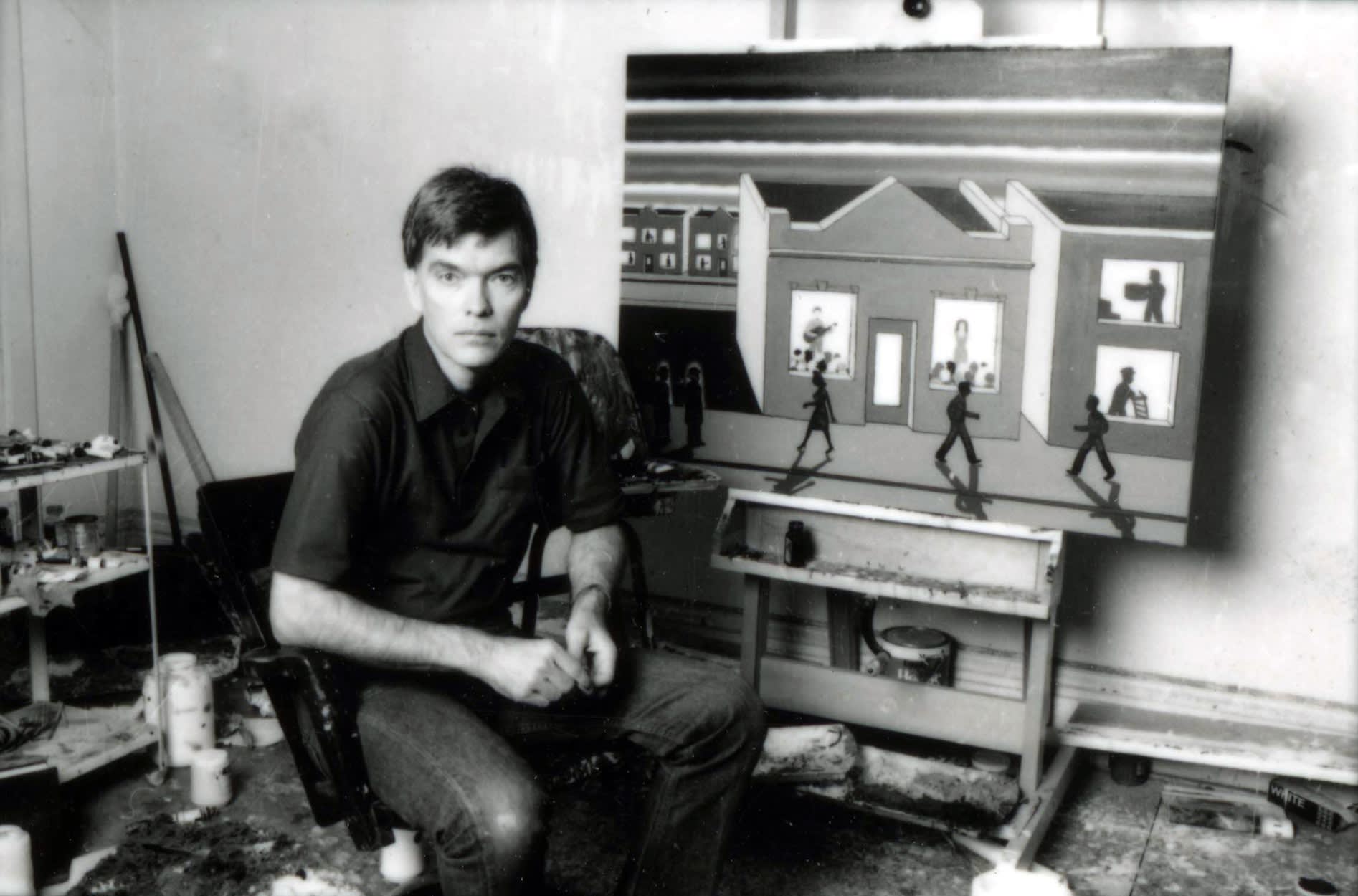
Kavi Gupta presents Roger Brown, Palace of Wonders, an exhibition celebrating Roger Brown’s late-career series of paintings based on the visual language of circus sideshow banners. Brown was an avid student of American visual culture. He trained and taught in arguably the best art school of his time, but also sought knowledge from self-taught artists, craftspeople, cartoonists, and the aesthetic strategies of advertising and pop culture. His range of influences suggests he had a universal artistic consciousness that acknowledged no concrete separation between the so-called genres of fine art and outsider art.
In 1990, when he was already an established artist, Brown attended Palace of Wonders: Sideshow Banners of the Circus and Carnival at the Krannert Art Museum in Champaign, Illinois, an exhibition of historic sideshow banners curated by circus artists Glen C. Davis and Randy Johnson. It was one of the first serious museum examinations of the art form since sideshows came into existence in the late 18th century, when traveling circuses themselves first appeared in America.
No official relationship existed between early circuses and sideshow promoters, who were mainly hustlers looking to cash in on the circus crowds. Unlike the athletic, choreographed spectacles and trained animals featured in the main circus tents, sideshows included a mix of unusual creatures; performers defying death by swallowing swords, walking across fire, and climbing ladders made of knives; and “freaks of nature” who were purported to have, for example, the head of a human but the body of a spider or a snake.
As more circus owners formed official relationships with the increasingly popular sideshows, a vivid artistic tradition took shape. Blending rough “freak show” imagery with the glamor and flash of the big top, the aesthetic grew to include bombastic visuals, bright colors, and sizzling language designed to entice people into the shows.
The Palace of Wonders exhibition at the Krannert Art Museum left an indelible impact on Brown’s artistic practice. He produced at least a dozen sideshow paintings that same year, and continued revisiting the format for years to come. Brown’s paintings not only paid homage to the visual language of the sideshow banners; they embraced the tangled relationship between the so-called main events and “outside attractions.”
All of Brown’s interests are on display in his sideshow paintings, including artworld satire, political controversy, current news, queer culture, American history, nature’s fury, architecture, and bad drivers. Invoking the sideshow ethos, Brown brought into focus the topics he saw as being outside the spotlight, or beyond polite conversation: lurid scandals, ugly controversies, lowbrow entertainment, and the opaque art world.
Museum of What’s Happening Now shows Brown’s trivializing opinion of Abstract Expressionism, a powerful influence in the art market of his time. In one fell swoop the work satirizes artists who blindly follow trends, collectors who artificially puff up the value of popular art, and institutions that glorify whatever happens to be at the top of the art world pyramid scheme at the moment.
Similar satires of supposedly separate interests that are actually in cahoots, and sideshows that are actually main attractions, underlie several of Brown’s sideshow banner paintings, including Government Smokescreen, which targets the savings and loan scandals of the 1990s; And Everybody Listens, a commentary on the fatwa that was placed on the author Salman Rushdie after he published his book Satanic Verses; and Aha! Heterosexuals Fuck Too, which addresses hypocritical political and social attitudes surrounding the AIDS pandemic.
Some of Brown’s other sideshow banner paintings draw on more personal content, such as Kissin’ Cousins, which traces Browns true-life ancestral connection to Elvis Presley, and Hank Williams, Honky Tonk Man, which reads like a frank tribute to the country music star, who grew up in Georgiana, Alabama, just downstate from Roger Brown’s home town of Hamilton. These paintings again seem to ask what the main attractions are: the famous singers, or the artist who immortalizes their images after they’re gone?

Equal parts sincere and sardonic, Brown’s exploration of sideshow banners feels less like a singular thesis about the “freak show” of modern living and more like an intimate snapshot of his own creative interests. Titled in honor of the presentation that inspired him, Roger Brown, Palace of Wonders is a dedicated exploration of this unique body of work within the artist’s late career.
Top image: Roger Brown, The Chicken House, 1990 Oil on canvas 48 x 72 x 2 in.



